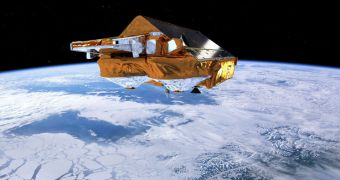Scientists in charge of validating the measurements made by the European Space Agency's (ESA) CryoSat spacecraft in Earth's orbit have recently made an important discovery – a portion of the Antarctic is currently getting taller.
The finding was made in a very interesting area of the continent, which is covered exclusively in polished blue ice. In other words, there is no snow cover on top of these extensive ice fields.
This makes them the ideal location to check data collected by CryoSat. The satellite operates by sending radar signals to Earth, and then analyzing the time it takes for them to bounce back into orbit.
By establishing the time it takes for these signals to bounce off clean ice with precision, it may be possible for investigators to detect any potential anomaly that may arise in CryoSat readings in the future. The discovery that the ice is raising was made during such a verification campaign.
The ESA satellite determines the height of the ice fields underneath by analyzing the differences between the signals it emits and the signals it receives. Experts conducted a series of studies meant to verify CryoSat data in 2008-2009 and 2010-2011.
Using advanced GPS equipment, researchers at the Technical University of Dresden (TUD) were able to measure the height of Antarctic ice over more than 2,500 square kilometers (965,25 square miles).
They determined that average ice heights increased by 9 centimeters (3.54 inches) between the two study periods. “This interesting result showing the reversal in height is thanks to the campaigns before the launch of CryoSat in 2010,” TUD expert Reinhard Dietrick explains.
“The results are, of course, preliminary but with this reversal in mind, it would be very interesting to see if the increase in height remains in the future,” the German investigator goes on to say.
By analyzing satellite data of the same area, spanning back more than 20 years, the team learned that a 5-centimeter (2-inch) drop in height occurred between 1991 and 2008. Scientists will continue to keep an eye on this type of data, so that they can figure out why the ice motions exist.

 14 DAY TRIAL //
14 DAY TRIAL //